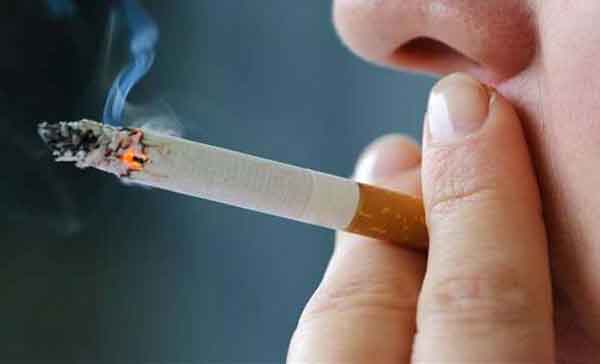INVC NEWS
New Delhi – : Vallabhbhai Patel Chest Institute has recently conducted a survey. In which it has been revealed that the number of 10th pass students was the highest in using tobacco products. They came to this conclusion on the basis of a total of 71,39,473 IVR calls received till April 30 this year. According to the institute, out of the total number of IVR calls received by the center till April 30, 2023, 20,43,227 calls were counseled, of which 9,96,302 were inbound calls, 26,80,657 outbound calls, and 3,91,160 calls were registered by the center. A total of 1,56,644 people have successfully quit tobacco use.
Introduction
Tobacco use continues to be a major public health concern worldwide, with devastating consequences on individual health and society as a whole. In a recent survey conducted by the Vallabhbhai Patel Chest Institute, a concerning trend has been identified—10th pass students are the largest group of tobacco users. This article explores the findings of the survey, sheds light on the demographic distribution of IVR calls, examines the factors influencing tobacco use among 10th pass students, discusses the health risks associated with tobacco use, and highlights efforts to curb tobacco consumption.
Survey Conducted by Vallabhbhai Patel Chest Institute

The Vallabhbhai Patel Chest Institute collected data through Interactive Voice Response (IVR) calls, receiving a staggering 71,39,473 calls until April 30 this year. Among these calls, 20,43,227 were counseled by the center, indicating a proactive approach to tackle tobacco use. The counseling data revealed that 9,96,302 calls were inbound, indicating individuals seeking help, while 26,80,657 calls were outbound, suggesting proactive outreach. The center also registered 3,91,160 calls, showcasing a significant demand for assistance. Notably, 1,56,644 individuals have successfully quit tobacco use, indicating the efficacy of counseling and support systems.
Demographic Distribution of IVR Calls
The data collected by the Vallabhbhai Patel Chest Institute highlights important demographic information. Among the IVR calls, the highest number of calls, totaling 1,23,508, originated from Uttar Pradesh, emphasizing the need for targeted interventions in the region. When examining the gender distribution of callers, it was observed that males constituted the majority at 98 percent, followed by 5 percent of transgender persons, while females represented the lowest percentage. Additionally, the survey revealed that the highest number of tobacco users, amounting to 1,74,097 individuals, were those who had completed their 10th standard education.
Factors Influencing Tobacco Use among 10th Pass Students
Several factors contribute to the higher prevalence of tobacco use among 10th pass students. Peer influence plays a significant role, as adolescents at this stage are highly susceptible to social pressures and often mimic the behaviors of their peers. Additionally, a lack of awareness about the harmful effects of tobacco and the benefits of quitting further perpetuates tobacco consumption. Stress and anxiety, common challenges faced by students during their academic journey, can lead to seeking solace in tobacco products. Moreover, the accessibility of tobacco products, particularly in areas with lax enforcement of regulations, contributes to higher consumption rates among 10th pass students.
Health Risks Associated with Tobacco Use
The use of tobacco products, regardless of the education level, poses severe health risks. Smoking and other forms of tobacco consumption have been linked to various respiratory problems, including chronic bronchitis and emphysema. Moreover, tobacco use is a leading cause of preventable deaths due to an increased risk of developing lung, throat, and oral cancer. Additionally, tobacco consumption is a significant risk factor for cardiovascular diseases, such as heart attacks and strokes. These health risks underscore the urgent need to address tobacco use among 10th pass students and encourage cessation.
Efforts to Curb Tobacco Use
Governments, healthcare organizations, and non-profit entities have undertaken numerous initiatives to curb tobacco use. Governments around the world have implemented strict regulations, including higher taxes, graphic warning labels, and bans on advertising, to discourage tobacco consumption. Furthermore, public awareness campaigns have been instrumental in educating individuals about the health risks associated with tobacco use. School-based interventions, such as incorporating tobacco education into the curriculum and organizing anti-tobacco workshops, aim to prevent initiation and promote quitting.
The Importance of Education in Tobacco Prevention
Education plays a crucial role in preventing tobacco use among students. By including comprehensive tobacco education in the curriculum, students gain a better understanding of the risks and consequences associated with tobacco consumption. It is essential to engage students through interactive methods, such as group discussions, case studies, and real-life examples, to increase their receptiveness and encourage critical thinking regarding tobacco use. By fostering a culture of awareness and empowerment, educational institutions can play a pivotal role in curbing tobacco use among 10th pass students.
Support Systems for Tobacco Cessation
Support systems are instrumental in assisting individuals in quitting tobacco use. Counseling services provide a platform for individuals to discuss their challenges and receive guidance on quitting strategies. Nicotine replacement therapy, including patches, gum, and medications, can help manage withdrawal symptoms and cravings. Support groups and helplines offer peer support and a sense of community, ensuring individuals do not feel alone in their journey towards tobacco cessation. These comprehensive support systems significantly enhance the success rates of individuals who wish to quit tobacco.
Conclusion
The survey conducted by the Vallabhbhai Patel Chest Institute sheds light on the concerning prevalence of tobacco use among 10th pass students. Factors such as peer influence, lack of awareness, stress, and accessibility contribute to higher tobacco consumption rates. However, concerted efforts are being made through government initiatives, awareness campaigns, and school-based interventions to curb tobacco use. Education plays a vital role in preventing tobacco initiation and promoting cessation among students. By providing comprehensive tobacco education, fostering awareness, and establishing robust support systems, society can work towards a tobacco-free future.
FAQs
1. Are 10th pass students more likely to use tobacco? Yes, according to the survey conducted by the Vallabhbhai Patel Chest Institute, a higher number of 10th pass students were found to be using tobacco products compared to other education levels.
2. What are the health risks associated with tobacco use? Tobacco use is associated with various health risks, including respiratory problems, increased risk of cancer (lung, throat, oral), and cardiovascular diseases (heart attacks, strokes).
3. How can tobacco use among 10th pass students be prevented? Prevention efforts can include comprehensive tobacco education in the curriculum, awareness campaigns, school-based interventions, and targeted support systems for tobacco cessation.
4. What support systems are available for individuals who want to quit tobacco? Support systems for tobacco cessation include counseling services, nicotine replacement therapy, support groups, and helplines, providing guidance, assistance, and a sense of community.
5. What is the role of education in tobacco prevention? Education plays a crucial role in raising awareness, providing information about the risks of tobacco use, and empowering students to make informed decisions regarding their health and well-being.
















